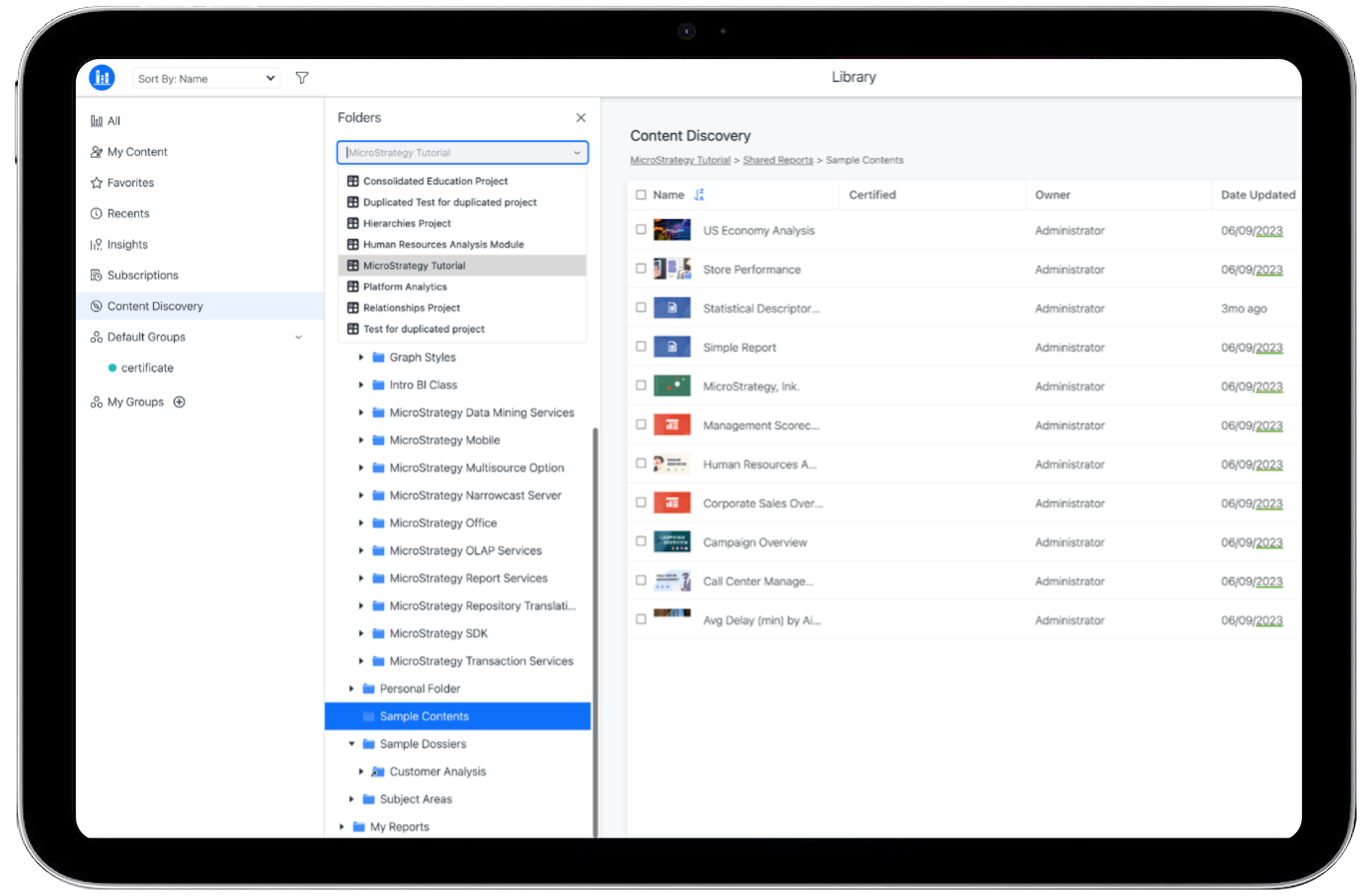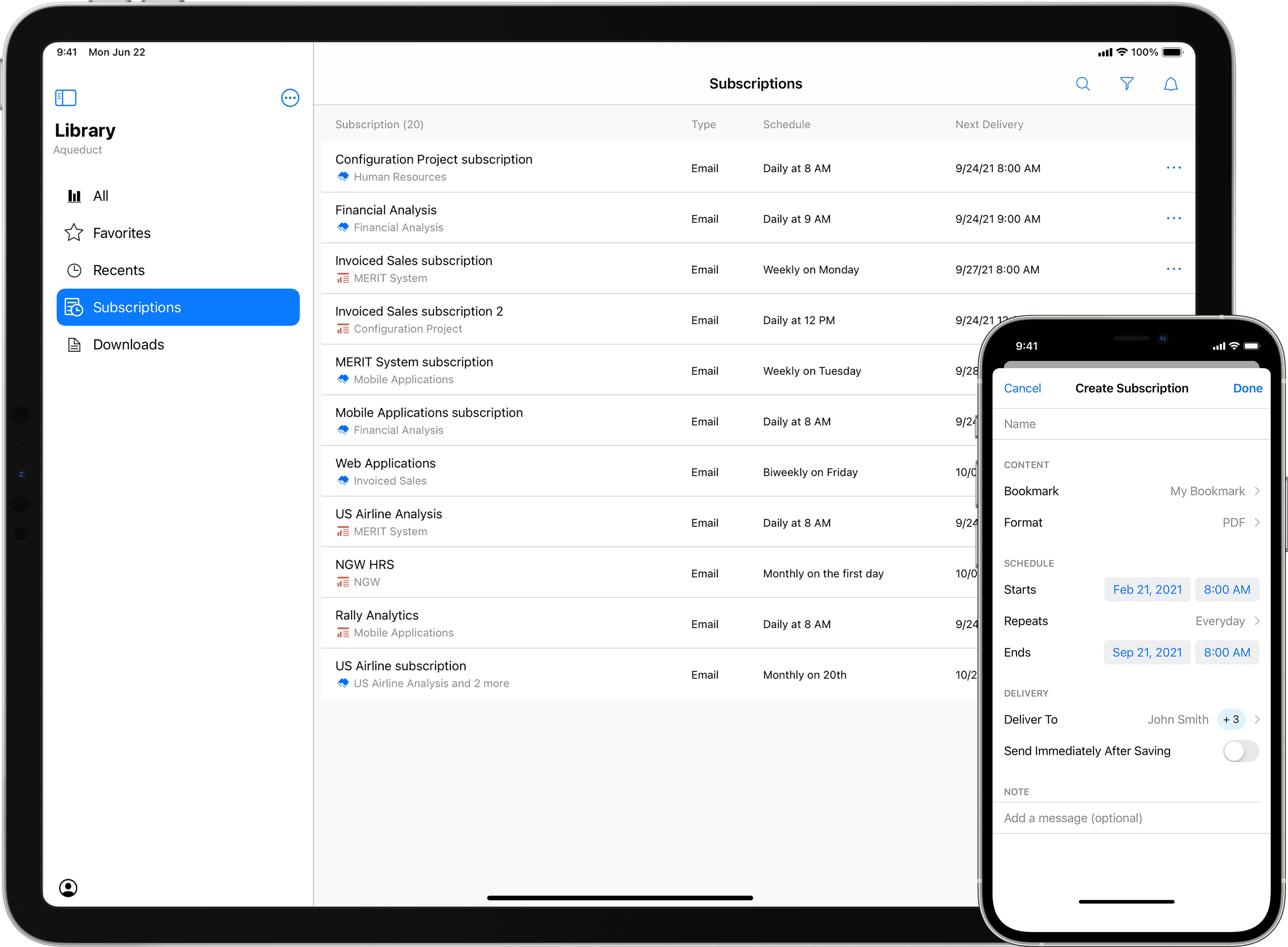MicroStrategy added the Library interface to its portfolio with version 10.11, released in 2019. However, the interface has yet to gain significant popularity among customers. Shortly, the Library interface will replace the Web interface completely. Thus, the transition will inevitably be required at some point.
Here are ten compelling reasons why it is advisable to make a soft transition now:
Centralised Content Storage
MicroStrategy Library provides centralised storage for analytics content, including reports, dashboards (Dossier), and documents. This ensures consistency and easy access to information.

Content Sharing and Collaboration
It enables users to share and collaborate on analytics content, fostering better organisational communication and knowledge exchange.
MicroStrategy Library allows real-time collaboration, enabling users to collaborate on Dossiers. This promotes teamwork and improves decision-making processes. We can achieve this by using MicroStrategy Collaboration.
Access Control and Security
MicroStrategy Library allows administrators to define access control and security settings, ensuring that sensitive information is accessible only to authorised users.
Administrators require the Workstation interface to manage access and edit user libraries.
A new feature is being developed to restrict user access to individual chapters!
User-Friendly Interface
MicroStrategy Library is intuitively designed, allowing users easy navigation, search, and access to necessary analytics content.
Users can leverage powerful search functionality to find all required information quickly. Users familiar with browsing through folders can do so in this interface.
Classic reports can be created in the new redesigned interface, which is more similar to Dossier. Users can manage subscriptions to dossiers and reports in this interface.
A template for Dossiers can be used, containing pre-cleaned datasets and visualisations for further analysis.
Mobile Access
MicroStrategy Library supports mobile access, allowing users to view and interact with analytics content on various devices. This promotes flexibility and decision-making on the go.
All a business user needs is the Library mobile application, available for iOS and Android operating systems.
MicroStrategy ensures that all data in the Library mobile application is secure and protected. Data is stored in the device’s local memory following Apple and Google guidelines for data persistence. Additionally, data transmission between the application and the server is encrypted using the HTTPS protocol, ensuring a secure connection over unsecured networks.
Application Usage
This is crucial for implementing “Embedded Analytics.” Multiple customised applications can be prepared and tailored to different user groups with access to specific applications. Applications are edited in the MSTR Workstation interface. You can customise authentication, hide or disable elements of the user interface, change the appearance of the entire Library interface, and more to adapt the application to your company’s requirements.
Integration with the MicroStrategy Platform
The transition will be inevitable sooner or later. It seamlessly integrates with the MicroStrategy platform, leveraging all the capabilities of analytics and other business intelligence tools in the MicroStrategy suite.
Customisation and Personal Experience
Users can customise their content and create personal libraries or folders to organise and access essential information. Alternatively, they can add specific Dossiers to their favourites. The platform also allows user experience customisation through the previously mentioned “Applications”.
Development and Functionalities
Most new functionalities are now exclusively available in the Library interface. Some recent additions include using new “parameter” objects, “Transaction services,” mapping visualisation formats to others, exporting the entire Dossier to Excel, etc.
Promoting “Self-Service” Analytics
It empowers users for “self-service” analytics, enabling them to create and share their reports and dashboards (Dossiers) without heavy reliance on IT. It fosters a culture of data-driven decision-making.
Next steps?
Wondering how to approach the transition from Web to Library? How to leverage the potential of using Applications? Would you like an additional presentation of the interface and to develop a user migration plan for the new interface? We can do this together! Contact us; we will be happy to assist you.
New Features in MicroStrategy from the Second Half of 2023 Onward
MicroStrategy has long been a leading platform in business intelligence and analytics. With the latest updates rolling out in the second half of 2023 and onward...
Read moreCritical Capabilities for BI Platforms
In May 2022, Gartner published its annual Critical Capabilities Report for BI platforms and MicroStrategy is number 1 for Enterprise Analytics. This report comp...
Read more


